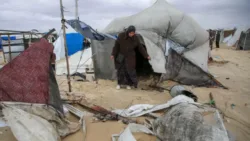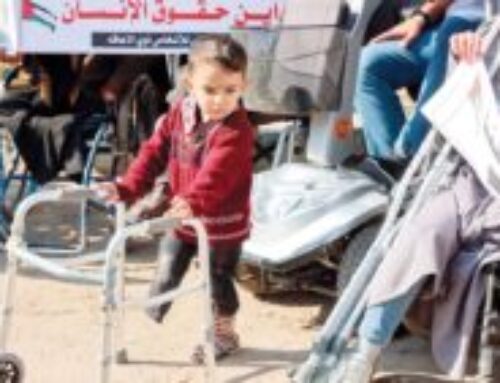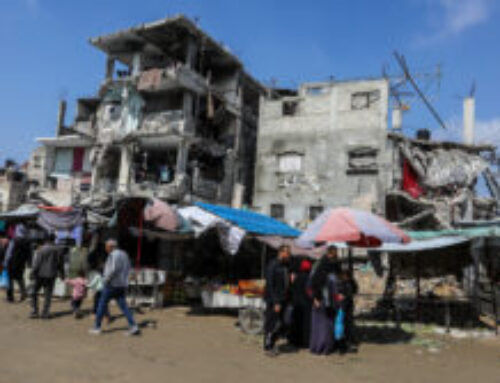Between tattered tents and a cold that bites to the bone, Gaza faces yet another chapter of its unending tragedy. The wind tears at the edges of makeshift shelters, and rain seeps into bodies before it touches the ground. Here, in sprawling camps across the strip, winter is not a season—it is an ordeal for survival in a land worn down by war and siege.
A Winter That Threatens Survival
According to the Gaza Center for Human Rights, nearly two million Palestinians face an “escalating humanitarian catastrophe,” as tens of thousands of families remain in worn-out tents that provide no protection from the cold or the rain. Restrictions on the entry of aid supplies persist, leaving people exposed to the elements.
“The humanitarian situation has reached unprecedented levels of severity,” says Mohammad Khairi, spokesperson for the center. “Especially in the southern and coastal areas where hundreds of thousands of displaced people are gathered. They live without any protection from the cold or the rain, with almost no heating materials and no drainage systems.”
He adds that only 23% of winter shelter needs have been met, meaning roughly 945,000 people live without real protection. “A single strong rainstorm,” he warns, “could flood dozens of camps.”
Faces of the Story: Fear, Cold, and Hunger
In a temporary camp in Deir al-Balah, Um Ahmad (45) sits before her torn tent, trying to patch holes with pieces of transparent plastic. “Winter has become a nightmare for us,” she says, her voice hoarse from the cold.
A few meters away, Mahmoud (10) crouches beside his father, trying to light damp wood. “I just want to go home and sleep in my bed,” he murmurs shyly. “I don’t like the tent—it’s always cold and wet.”
In a nearby tent, Abu Nasser (68) wraps himself in an old cloak:
“I’ve lived through all the wars, but nothing like this. We thought we’d return home in a week or two, and now we’ve been here for months. No electricity, no water, no warmth. The cold is deadly—especially for the sick like me.”
Small Acts of Hope
Amid the wreckage, small sparks of humanity still glow.
“We try to collect blankets and clothing from kind people and distribute them to families,” says Rami al-Haddad (27), a volunteer with a local initiative. “But the needs are far greater than our resources. People here aren’t asking for comfort—just a way to stay alive.”
At a temporary field clinic near Deir al-Balah, doctor Mahmoud Jahjouh describes the health risks:
“We’re already seeing severe colds and pneumonia among children due to dampness and lack of heating. The situation is alarming—if heavy rain hits, diseases will spread rapidly.”
An Open Plea to the World
The Gaza Center for Human Rights warns that “winter in Gaza does not simply mean a drop in temperature—it means life or death for thousands of families.”
Delays in allowing shelter materials to enter, the center cautions, will deepen the catastrophe. It calls on the international community to act urgently to provide proper tents, blankets, and winter clothing before it is too late.
“The protection of life and preservation of human dignity are a shared responsibility,” Khairi concludes. “What is happening in Gaza today is not a passing humanitarian crisis—it is a test of our collective humanity.”
In Gaza, winter does not arrive as a season—it arrives as a memory added to an endless chronicle of pain. Every tent tells a story, every drop of rain is a test of endurance.
Yet, amid the cold and the ruins, someone still lights a candle; someone still shares what little warmth remains—to remind the world that even in despair, life insists on being lived.





